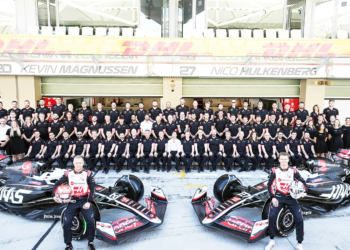Ferrari fans have been longing for a strong and competitive team performance from the Scuderia since the great dominant era with Michael Schumacher in the late 2000s. After the Italians last won the Formula 1 Drivers’ Championship in 2007 and 2008, the team’s performance has consecutively proven not to be enough to secure the title. It seems like the prancing horse has finally managed to put out a strong and consistent engine unit, but in the last season as well as the current, they have one major weakness – the aerodynamics.
Adrian Newey‘s potential joining of Ferrari could have profound implications for the team, giving the Scuderia a strong and reliable person to rely on for driving the aerodynamic development of the car. Newey, widely regarded as one of the most brilliant and successful aerodynamicist engineers in the history of the sport, has had a stellar career with multiple teams, most notably with Red Bull Racing, where his designs have won numerous championships.
Technical innovation and design philosophy
The car’s underbody, particularly the floor and diffuser, is a focal point for Newey. He employs advanced techniques to maximize the Venturi effect, creating a suction force that enhances the car’s grip and stability by pulling it towards the track. Newey’s side pod designs are also known for their aerodynamic efficiency. He designs these components to ensure smooth airflow to the rear, reducing turbulence and enhancing the effectiveness of the rear wing and diffuser.
Newey pioneered the use of blown diffusers, where exhaust gases are strategically directed over the diffuser to significantly boost downforce without increasing drag, an innovation that has had a lasting impact on Formula 1 car design. The rear end design, including the rear wing and areas around the gearbox and exhaust is also a target for the British engineer. He ensures that these areas minimize turbulence and maximize the aerodynamic pull from the car’s rear, improving both speed and stability.
Team dynamics and culture
Integrating a figure like Newey into Ferrari could also impact the team’s dynamics and culture. Ferrari, with its rich history and passionate following, is known for its high-pressure environment. Newey’s presence could bring a new level of discipline and a focus on innovation, potentially changing how the team operates on a day-to-day basis. However, his integration would need to be handled carefully to ensure that it complements the existing structure rather than disrupting it.

Strategic impact
On a strategic level, Newey’s track record of success and forward-thinking approach could help Ferrari anticipate and adapt to the ongoing regulatory changes in Formula 1. The sport is heading towards more sustainable practices, including changes to car design and fuel. Newey’s experience with aerodynamics and his recent interests in more sustainable racing technologies could give Ferrari an edge as they navigate these changes.
Can challenges with adaptation hinder the process?
However, the transition might come with challenges. Newey’s methodologies and design concepts may be a gamble like in the online casino lukki and differ significantly from those previously employed by Ferrari, requiring a period of adaptation for both him and the team. Additionally, the high expectations placed on his shoulders could create pressure to deliver immediate results, which in the highly competitive and complex world of Formula 1 might not be realistic.









